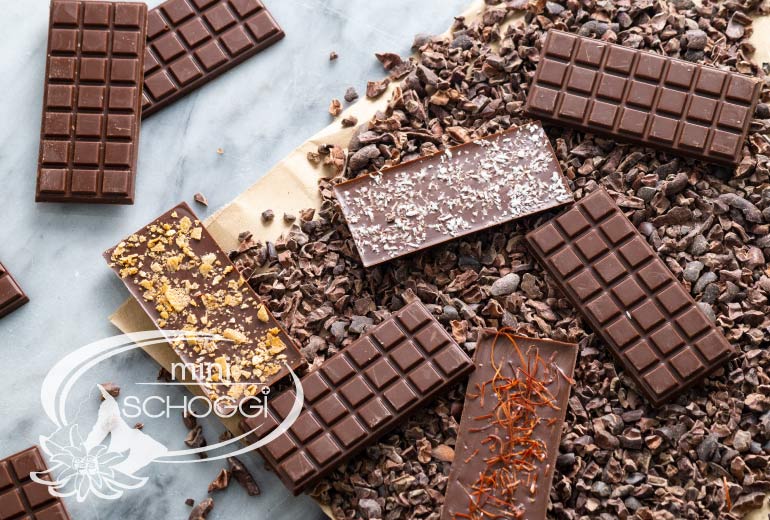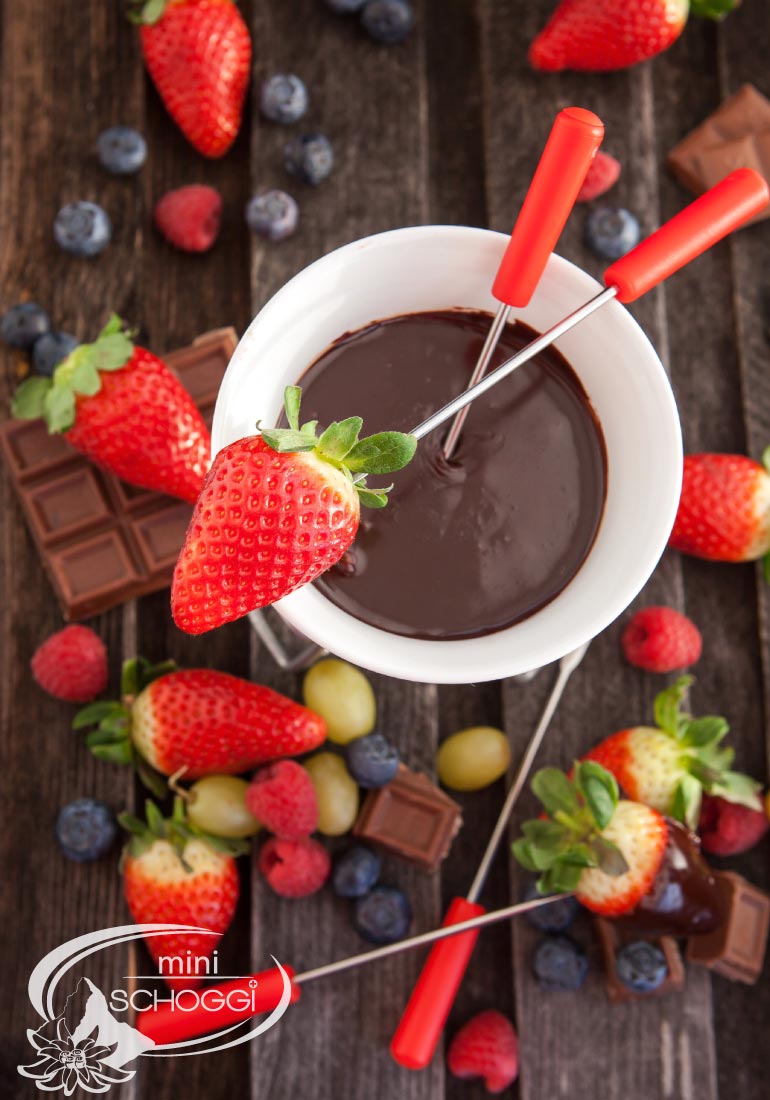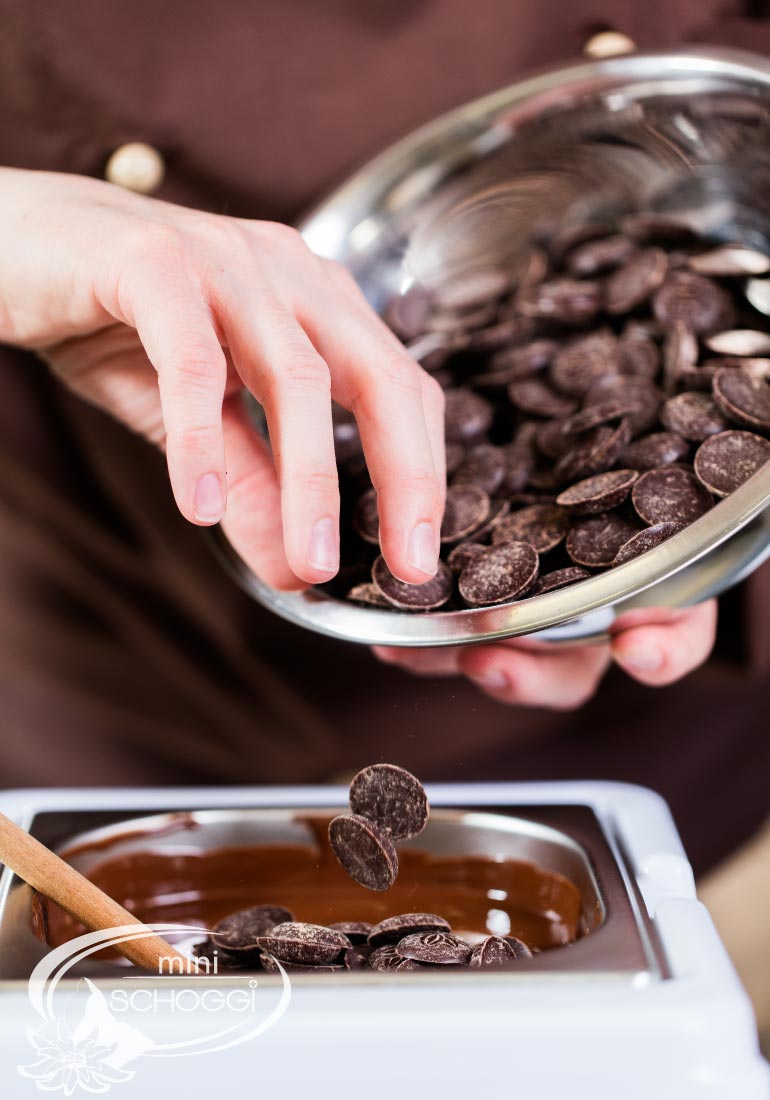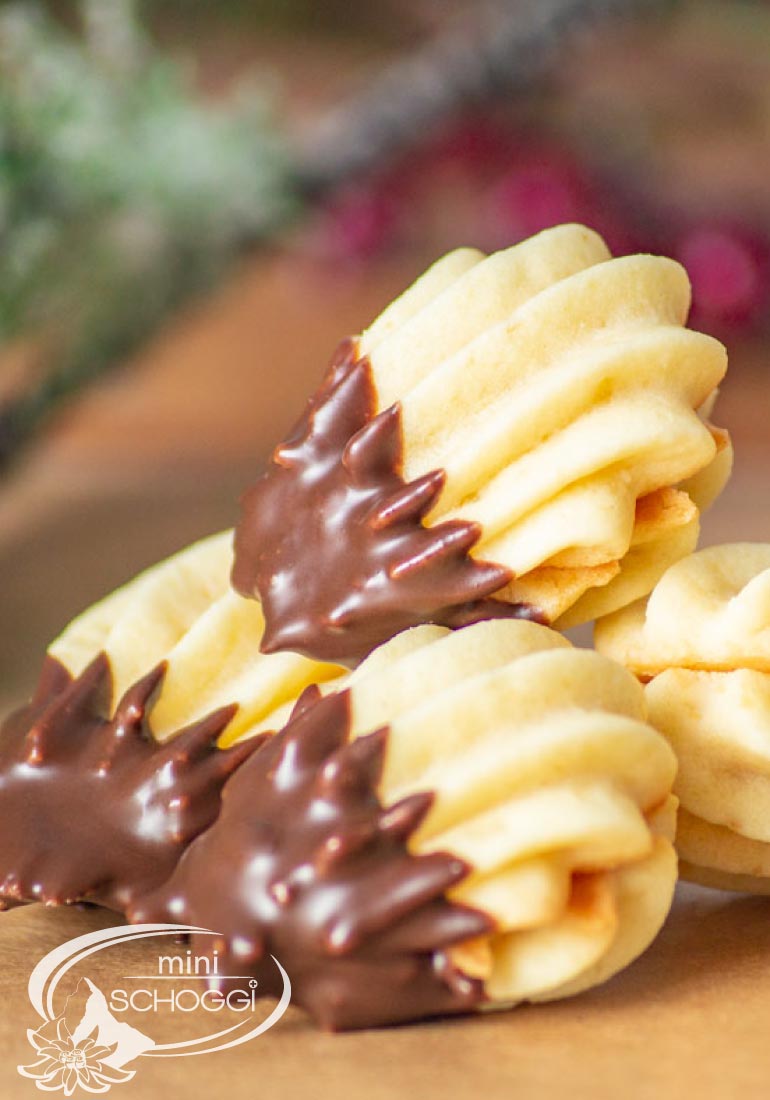...
Blog categories
- Sweet recipes (95) click
- Salty recipes (8) click
- Cooking (27) click
- Seasonal recipe ideas (64) click
- Things to know (21) click

There are so many different chocolate-like products. How are you supposed to know which product is suitable for which purpose? In this blog post, we want to clarify the differences between normal, commercial chocolate, couverture and cake or fat icing.

Normal chocolate, which is available in every supermarket, does not melt as well as couverture because the cocoa butter content is much lower than in couverture. As a result, normal chocolate always remains somewhat viscous and it is very difficult to almost impossible to cover a praline with a wafer-thin layer of chocolate. You can see this difference particularly well when melting normal milk chocolate and milk couverture. Normal milk chocolate remains very thick, whereas milk couverture melts very nicely. In general, we therefore never recommend using commercial chocolate for making pralines, bars or figurine moulds.
Normal chocolate also has a higher sugar content than couverture, which is why it is cheaper, but also much sweeter to eat than couverture. It is best to use chocolate for eating at home or for baking simple cakes.
Couverture has a lower sugar content and a higher proportion of cocoa mass and cocoa butter. Since these two ingredients are more expensive to buy than sugar, the final price of the couverture also increases. However, you are rewarded with a more intense chocolate aroma and the flowing properties make it ideal for making chocolate bars, pralines, hollow figures or other chocolate specialities. Couverture must be tempered before processing, otherwise it will become grey and/or brittle.Find out more about tempering here .
Couverture is available in different units: as a whole block, couverture drops or shavings. We prefer couverture drops as they are the perfect size for processing. Since high-quality couverture is hard to find, we offer various couvertures from different manufacturers and countries of origin in different packaging units in our shop in Adliswil as well as in our online shop. We only use and sell couverture of exquisite quality.


Cake icing is a chocolate-like mass that is not tempered but still shines. It is very easy to use: place the cake icing packet in lukewarm water until the contents have melted, pour over the finished cake and voilà, the cake icing sets, becomes solid and has a beautiful sheen. For cake icing, omit the cocoa butter completely and replace it with another foreign vegetable fat, usually coconut or palm fat. This saves the time of tempering. It is also much cheaper, as it is mainly the cocoa butter that makes the couverture so expensive and palm and coconut fats are quite cheap in comparison. In terms of taste, however, it does not come close to chocolate or couverture.
In confectionery, couverture is used to coat cakes, cakepops or confectionery. However, it is never used for high-quality confectionery products such as pralines or chocolate bars.
In general, chocolate as well as couverture and cake icing should always be stored in a dark, cool and dry place. With cake icing, it is not quite as tragic as with the other two if it is not stored at 18 degrees, as it does not contain cocoa butter.
The shelf life varies depending on the variety. As a rule, white chocolate, couverture or icing has the shortest shelf life at 6 months, then comes with milk up to 1 to 1 1/2 years and dark with up to 2 years.
 Casting your own chocolate Easter bunnies
Casting your own chocolate Easter bunnies
 Make your own decor roulade
Make your own decor roulade
 Correctly temper couverture and chocolate
Correctly temper couverture and chocolate
 Cake Recipes Convert
Cake Recipes Convert
 Casting Father Christmas from chocolate
Casting Father Christmas from chocolate
Leave a comment